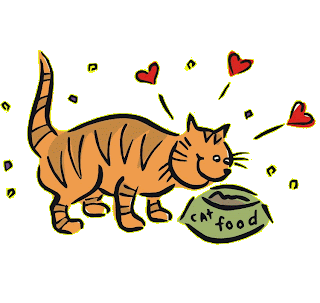Do you know the essential cat nutrients? Can you identify the basic needs of cats, when it comes to diet? Let’s explore the topic and see what we can learn.
The Six Categories Of Cat Nutrients
All nutrients for cats fall into one of the following categories:
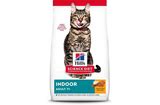
- Protein
- Fat
- Carbohydrate
- Vitamin
- Mineral
- Water
It becomes very important for your kitty’s diet to include all of these categories. One way to make sure you include all of these in kitty’s diet involves reading the label on any cat food you purchase, to make sure the AAFCO (Association of American Feed Control Officials) statement appears.
Your Obligate Carnivore Needs Animal Protein
Your cat needs aminal protein for the nutrients it provides. Kitty’s digestive tract breaks this protein down into building blocks which go by the name of amino acids. These they reassemble into the type of protein needed by kitty’s body.
Some amino acids are nonessential, as the cat’s body makes many of these. However, here are 11 essential amino acids for cat that must be supplied in a cat’s diet:
Arginine Histidine Isoleucine Leucine Lysine Methionine Phenylalanine Taurine Threonine Tryptophan Valine
How Do You Define Crude Protein?
Look for the guaranteed analysis section of the cat food label. Crude protein represents an estimate of a diet’s protein level. This level is determined by measuring the amount of nitrogen present.
According to AAFCO mandates, for a cat food to be considered nutritionally complete and balanced, it must contain a minimum of 26% crude protein. The minimum for growth and reproduction is 30%.
More than the AAFCO minimum proves almost always better for cats. According to research, the diet that provides around half its calories from crude protein will come close to matching what a cat will seek out if left to his own devices.
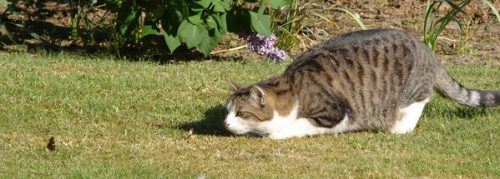
Protein Problems
Be forewarned, though, that you can give too much protein, especially if it is of low quality. Such a poor source of protein can worsen symptoms of kidney disease. Proteins could also become the primary trigger for food allergies in cats. Discuss such problems with your vet.
What About Fats?
Fat becomes the most energy-rich nutrient in kitty’s diet. Fats act to transport molecules and they also help with conducting nerve impulses. Fatty acids such as omega-3 and omega-6 help with the health of skin and coat, accelerate wound healing, and keep down inflammation.
Essential fatty acids constitute part of ingredients such as salmon, chicken, liver, or beef.
Which Vitamins And Minerals Does A Cat Need?
First of all, realize if your cat is healthy and eating a nutritionally complete and balanced cat food, you won’t have to provide additional supplmentation. AAFCO claims that cat foods need to contain the following vitamins:

Vitamins A, D, E, and K, thiamin, riboflavin, pantothenic acid, niacin, pyridoxine, folic acid, biotin, vitamin B12, choline
AAFCO states that the following minerals in sufficient amounts must be present in cat food:
Calcium, phosphorus, potassium, sodium and chloride, magnesium, iron, copper, manganese, zinc, iodine and selenium.
How Important Is Water?
Water ranks as the most important nutrient for cats. Just as with humans, water comprises a large percentage of a cat’s body. Because cats originally lived in the desert, they do not require as much water as a dog. However, they must get sufficient water in order to survive.
Modern cats have evolved to get a lot of their water from their food. For this reason, wet foods certainly provide a better choice than dry food. If your cat eats a diet high in meat protein, he will gain water from that food. Make sure you find ways to get your cat to drink enough water.
What Are Age-Specific Dietary Needs?
It becomes necessary to realize that a cat will need a slightly different diet dependent upon his stage in life. He might be a kitten, an adult cat, or a senior. Look at these three stages and determine where your cat fits.
Kitten (0 to 6 months)
Because of their rapid growth and development during this period, kittens require a higher calorie intake. Compared to adult cats, the kitten needs about twice the calories per pound of body weight.
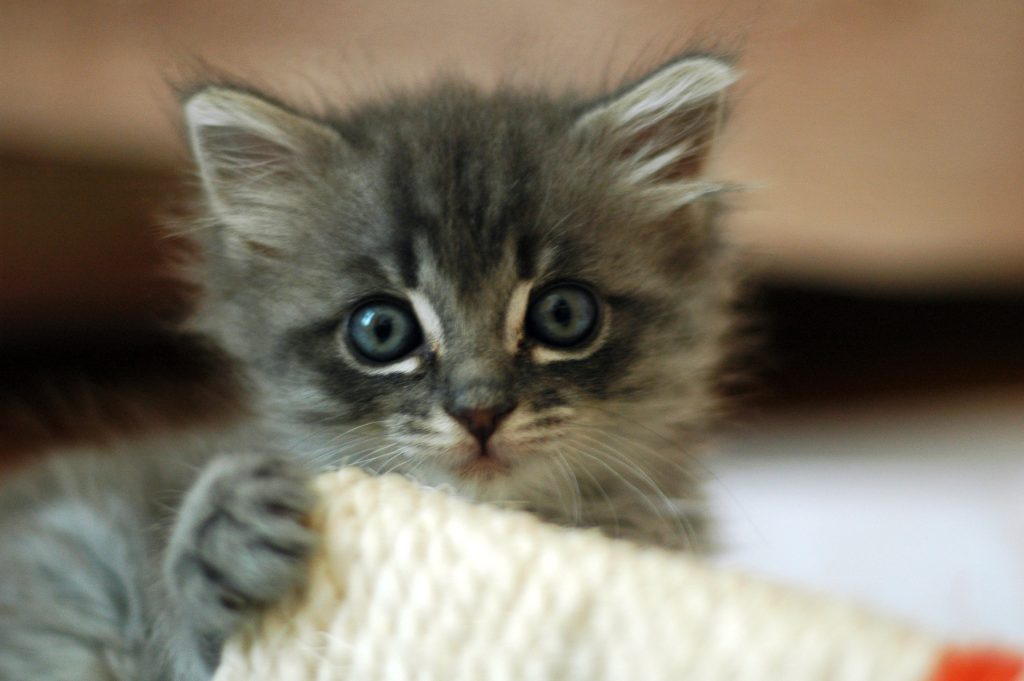
A kitten’s diet should be constituted of about 30% high quality protein, crucial for muscle development. Furthermore, around 20 to 30% of their diet should consist of fat. Healthy fats provide energy and also contribute to the absorption of fat-soluble vitamins.
When quite young, kittens need to eat frequently, as that tiny tummy has only so much food. Therefore, at 8 weeks of age, the kitten needs to be fed about 5 meals a day.
By 6 months, their need for food will decrease, as the kitten has now reached 75% of the adult size and can be fed two meals a day. At this stage, use a good quality kitten food, as feeding will then meet the youngster’s demanding nutritional requirements.
An adult cat food can be introduced at about 8 to 10 months of age.
Adult Cat (1 to 6 years)
An adult cat will require a lower amount of calories compared to a kitten. Don’t overfeed — you need to feed an appropriate amount that will not lead to obesity.
A diet rich in protein is important. It should be around 25 to 30 percent protein to fill the requirements of your obligate carnivore. Another 20 to 30 percent should come from healthy fats. These provide energy and support skin and coat health.
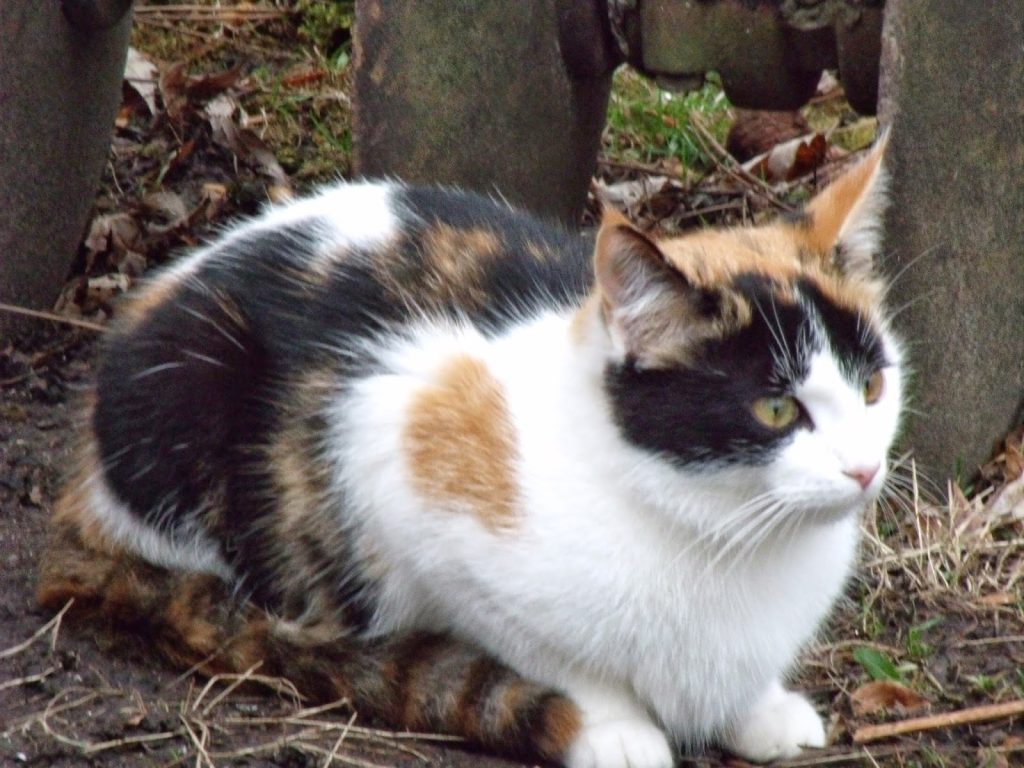
Make sure kitty gets adequate fiber, as it will help regulate digestion and prevent hairballs. Remember, provide fiber in moderation.
Taurine becomes an essential amino acid, vital for heart health and proper vision.
If you provide dry food in the diet, do make sure that sufficient wet food has been given to kitty. You can give a small meal of wet food followed by some kibble; just make sure you don’t overfeed your cat. It’s much easier to put weight on than it is to take it off again.
Certain illnesses in cats can require a special diet. Your vet becomes your best source of information if such fits your cat’s health status.
Senior Cats (7+ years)
Similar to humans, a cat’s energy or caloric requirement initially decreases in their senior years. However, at around 11 years of age, energy requirements increase. The reason: As they age, cats have more difficulty digesting fats and proteins.
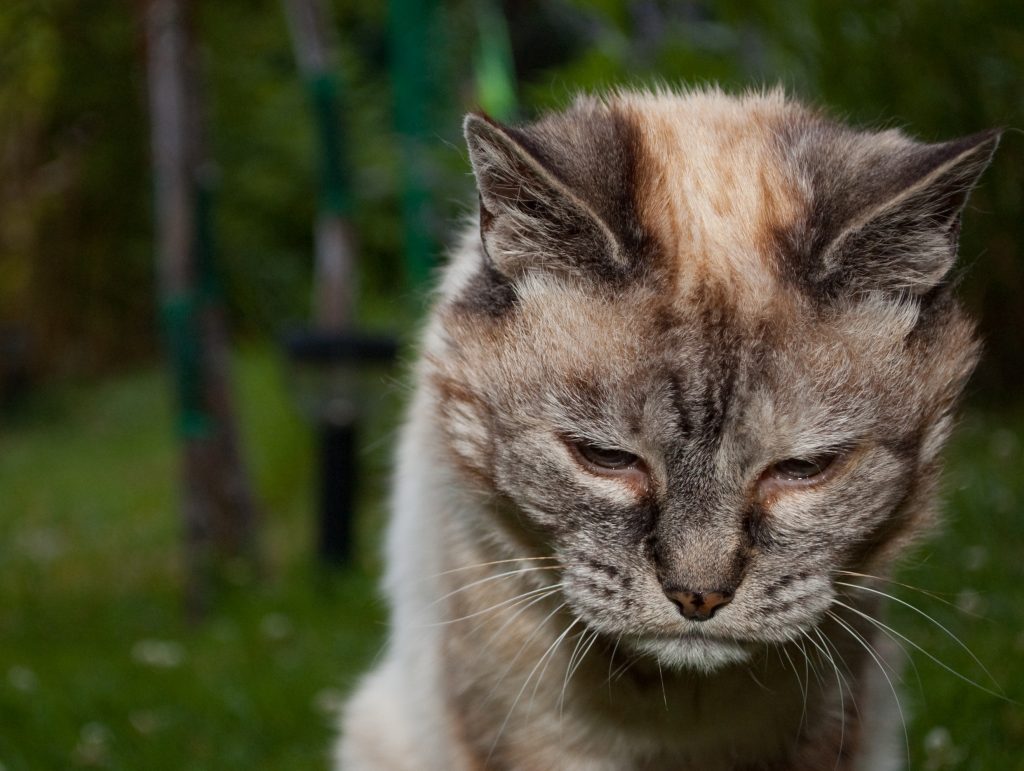
To avoid the problems caused by obesity, calorie control may become necessary. Maintaining a healthy body and good muscle mass reduces the risk for many diseases. Since the amounts of nutrients in different foods can vary widely, your veterinarian can recommend a diet based on your cat’s specific needs.
However, do keep their protein intake high. In fact, older cats may benefit from increased protein intake, as it supports muscle maintenance and prevents muscle loss due to aging.
You may need to add glucosamine and chondroitin to aid in maintaining joint health. You may need to find easily digestible foods for their aging digestive systems.
If you feed a senior cat diet, it should be formulated with appropriate nutrient limits and fewer calories. For this reason, your vet becomes an excellent resource for developing a diet specific to your cat’s needs.
Awareness Becomes Important
Because you spend time with your cat and know the habits and idiocyncracies kitty has adopted, you can watch for the changes in kitty which indicate he’s entering a new stage of life.
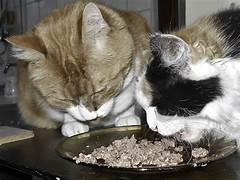
One thing that might be very helpful — when you prepare kitty’s food, be sure you offer variety, in terms of flavors, dry and wet food, and textures. If you do so, you’ll have far less “picky eater problems.”
Just be observant and note changes as they occur. Maintain a healthy, balanced diet to ensure that you face less problems with meals as well as with general kitty health.
References I used for this post: catster.com/cat-health-care/what-to-feed-your-cat vcahospitals.com/know-your-pet/nutrition-feeding-guidelines-for-cats aspca.org/pet-care/cat-care/cat-nutrition-tips vcahospitals.com/know-your-pet/feeding-mature-senior-and-geriatric-cats petmd.com/cat/nutrition/cat-nutrition-what-makes-nutritional-cat-food

